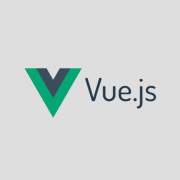
2021’s Top Front-End Development Trends
It is sine qua non for front-end developers to be abreast with the most recent rapidly changing JavaScript trends in order to quickly learn and incorporate the most productive ones into their tech stacks. This will enable them to create robust apps using the most practical and substantial development techniques available.
Let’s take a look at the most popular JavaScript technologies in 2021, as recommended by experts.
Svelte

Despite the fact that Svelte is a relative newbie among JavaScript frameworks, front-end engineers anticipate that it will have a chance to shine in 2021. It was first launched in 2016, and by 2020, it was considered the most fascinating and promising JavaScript framework, thus gaining traction among front-end developers.
Svelte is used by 15% of front-end developers in their app development due to the following benefits:-
- short syntax;
- Web app creation that is quick and lean;
- reusable components that can be incorporated from other Javascript frameworks;
- Simple code splitting and other advantages.
React

In a recent research, The State of JS placed React as the 2nd most fascinating, pleasant and widely used framework. However, this does not imply that React is losing ground. According to the same report, 19.1 percent of those surveyed, want to add React to their tech stack and 64.8 percent plan to use it in front-end development.
React is likely to have a successful year in 2021, as its npm package downloads surpassed 10 million in April, which is 5 times larger than AngularJS.
For the past few years, React has been one of the most popular JavaScript frameworks. It is praised by many software developers for its lightning-fast virtual DOM, ease of learning and use as well as high flexibility.
TypeScript

TypeScript is the second most popular language on Stack Overflow, surpassing C#, Javascript and Python. TypeScript will remain one of the most loved programming languages for software development in 2021, and it will acquire even more traction in the front-end.
TypeScript has grown in prominence as a viable alternative to JavaScript since its debut in 2012. The simplicity of TypeScript’s syntax appeals to many software developers. It simplifies the coding, reading, and debugging of JavaScript. Furthermore, TypeScript is better suited to large-scale projects, whereas JavaScript is better suited to smaller ones.
Vue.js

One of the most impressive JavaScript frameworks is Vue.js. It was recognized as the 7th most popular front-end framework. It is popular because of its lightweight design, ease of use and customization, and compatibility with other frameworks such as React, Laravel, Express, Django, and others.
Let’s look at some of the aspects that make Vue.js such a popular choice among software developers:
- minimal size and light as compared to competing frameworks, such as AngularJS
- features formal typings and decorators for individuals who prefer TypeScript to JavaScript with Vue
- uses a virtual DOM to speed up content and page rendering
- for improved code reusability and fewer coding errors, supports third-party libraries for JS dependency injection (Vue Injector)
- includes reusable UI components for speedy web application creation and maintenance
- Vue is extremely user-friendly, and beginners simply need to know HTML, ES5, and JavaScript to get started
- one-way data binding that speeds up and simplifies data transfer between components
This JavaScript framework, is gaining a lot of traction these days. Vue.js makers released their long-awaited release in September 2020, complete with top-notch features for front-end development.
Third release of Vue.js came with the following features:-
- layered modules and smaller bundle sizes
- Composition API simplifies work with large-scale applications
- Its ‘compiler-informed virtual DOM’ improves performance
- TypeScript integration and enhanced support, among other things
For the past eight years, JavaScript has maintained its dominance in front-end development. Many programmers choose this language because of its ease of learning and implementation, speed, and ability to design sophisticated user interfaces. It contains a diverse set of tools and frameworks that enable developers to take a variety of development approaches and design even the most complex features.
That said, keep an eye out for the following frameworks and libraries in 2021 :

